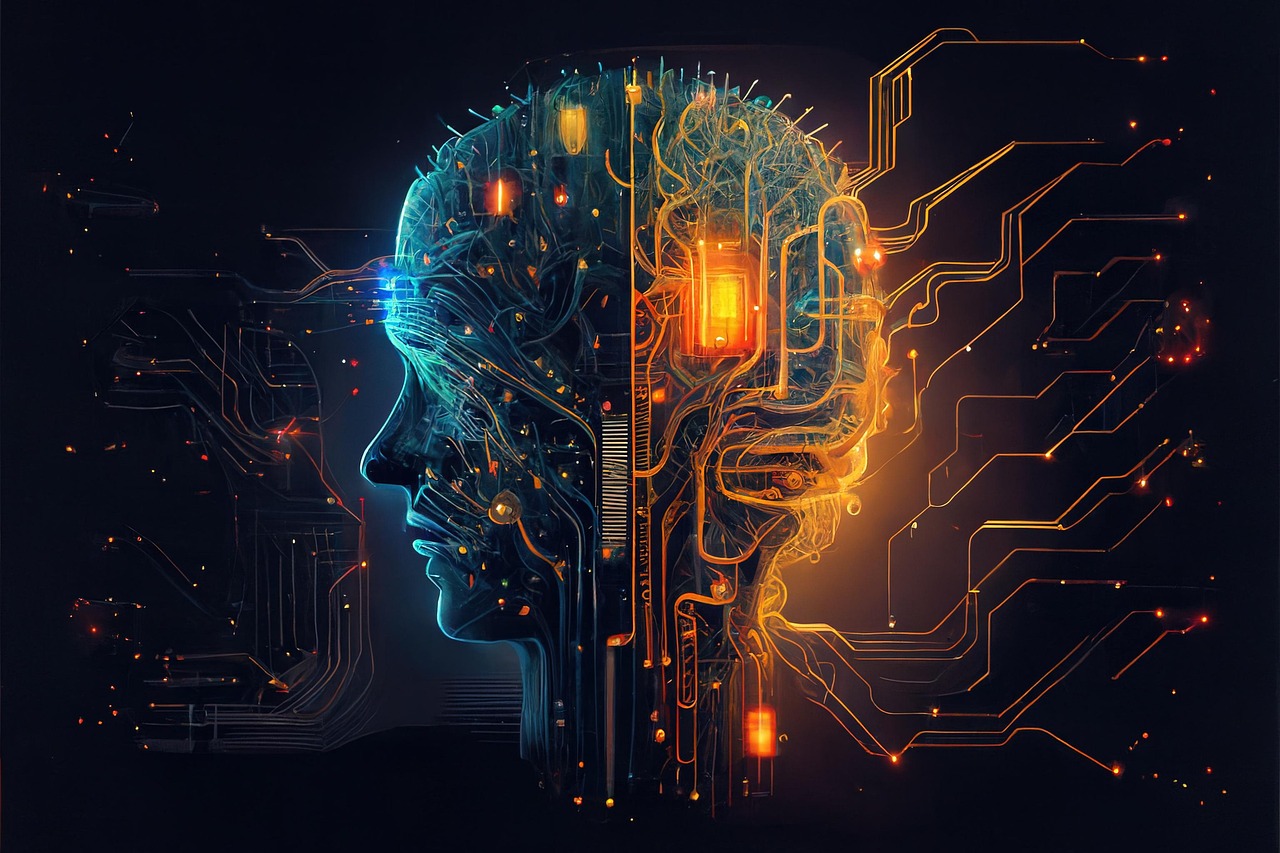What is AI?
Artificial Intelligence (AI) is the technology that enables machines and computers but behave or act as a human intelligence. It enable computers to perform a variety of advanced functions, including the ability to generate image, audio, text, and more. AI enables machines to simulate human abilities, such as learning, problem-solving and decision-making.
AI improves continuously by utilizing methods like machine learning and deep learning, improve their performance of specific tasks, allowing them to adapt to new inputs and make decisions without being explicitly programmed.

How Artificial Intelligence (AI) works?
Artificial intelligence (AI) systems work by using data and algorithms. First, a large amount of data is collected and fed into mathematical models called algorithms. These algorithms analyze the data to find patterns and make predictions in a process known as training. Once the algorithms are trained, they can be used in different applications, where they keep learning and adapting based on new data. This allows AI systems to perform complex tasks like recognizing images, understanding language, and analyzing data more accurately and efficiently over time.
Father of Artificial Intelligence (AI)
John McCarthy (1927–2011), an American computer scientist and cognitive scientist, known as the “father of artificial intelligence” (AI), made significant contributions to both AI and computer science.
John McCarthy used the term Artificial Intelligence for the first time in 1956 when he organised the Dartmouth Conference, which is considered the birth of AI as a field of study.
Types of AI :-
By capability
Weak AI (Narrow AI): Perform specific tasks with human-like abilities. It uses supervised and unsupervised learning. Examples include voice assistants like Siri. Weak AI can’t perform beyond its programmed capabilities.
Strong AI (General AI): A hypothetical or theoretical form of AI with human-like intelligence, understanding, and reasoning. It can perform any intellectual task that a human can. Strong AI remains a concept that has not yet been exist.
Super intelligent AI: An advanced form of AI that surpasses human intelligence in every aspects. This type of AI could potentially outperform humans in all field, from scientific research to social skills. This also currently theoretical.
By functionality
Reactive AI: It works with predefined task and performs it. It doesn’t store any memory or have the ability to learn from past experiences. Examples parking sensors or simple chat bots.
Limited Memory: It can store past memory and using this experience it take future decisions. Most modern AI systems, such as self-driving cars, belong to this. They use supervised and unsupervised learning methods.
Theory of Mind: An advanced form of AI that can understand and interact with human emotions and thoughts. It involves complex interactions but it still in the experimental stage.
Self-aware AI: A theoretical form of AI with self-consciousness and awareness. It would possess the ability to understand its existence, much like humans. This concept remains speculative and is a subject of philosophical debates.
By Purpose
Generative AI: As name suggest it base on creating. This type of AI focuses on creating new content, such as images, music, or text, using a technique called unsupervised learning to produce realistic results. Key forms of generative AI include:
Generative Adversarial Networks (GANs): These consist of two neural networks—a generator and a discriminator—that work against each other. The generator creates data, while the discriminator assesses its realism, helping the generator improve over time.
Variational Autoencoders (VAEs): VAEs transform data into a simpler, hidden representation (latent space) and then convert it back to generate new data that retains similarities to the original.
Diffusion Models: These models create data by reversing a process that adds noise to it, producing high-quality samples through repeated refinement.
Multimodel AI: This type integrates various data types, such as text, images, and audio, to create content that spans across different formats.
Recurrent Neural Networks (RNNs): RNNs are ideal for generating sequential data, as they remember past inputs, allowing for coherent outputs.
Flow Models: These use reversible transformations to map data into a simpler form (latent space), enabling accurate data generation and analysis of data distribution.
Neural Radiance Fields (NeRFs): NeRFs can create 3D scenes from 2D images by modeling how light radiates from each point in space.
Predictive AI: Predictive AI uses data to forecast future events, employing methods like linear regression and time series analysis. It is commonly applied in areas like demand forecasting and risk management.
Assistive AI: This AI is designed to help people with various tasks to boost productivity and efficiency. Examples include virtual assistants and recommendation systems, which often rely on supervised learning.
Conversational AI: This technology powers chatbots and virtual assistants, facilitating human-like conversations using natural language processing (NLP) and dialogue management. It combines techniques from supervised, unsupervised, and deep learning to achieve this.
AI is already transforming the way we live, work, and interact with technology. And as it continues to evolve, it’s opening up even more exciting possibilities for the future.




